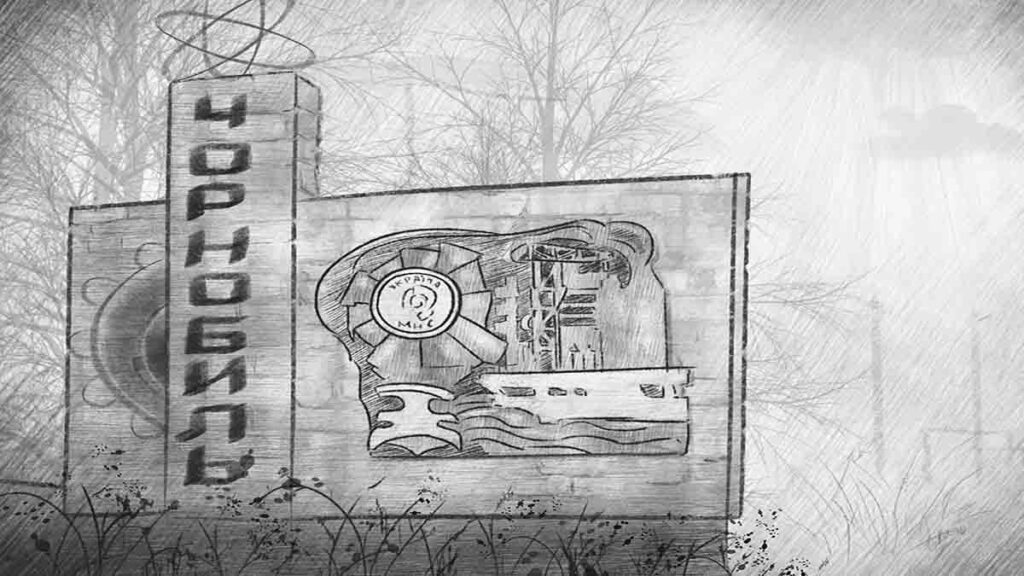
The most common misconception among guests at the Chernobyl nuclear power station is the misconception that there is no difference between the terms of “spent fuel storage” and “nuclear repositories”.
Journalists also often make such a mistake, putting an equal sign between these concepts. You need to know their distinctive features to understand the difference between them and conditionally streamline these phenomena. The following material is about the former storage facilities, as well as those that will appear in the future, their differences from each other.
The “Warehouses” of the exclusion zone are conventionally divided into four subgroups:
- spent nuclear fuel storage facilities;
- storage facilities for radioactive waste and materials;
- radioactive waste disposal sites;
- temporary localization sites for radiation waste, including sedimentation tanks of contaminated equipment.
As you know, the nuclear fuel for the reactor is uranium, concentrated inside the fuel elements. A pair of such packed uranium-containing elements gives rise to a fuel assembly, and a little more than one thousand six hundred such assemblies lowered into the reactor core generate energy directly.
Spent fuel assemblies are removed from the reactor due to the burning of uranium. These, a kind of “tired” technical structures, are immersed in special cooling pools in which they are stored for a certain period – until their radiation activity level decreases. Such exposure may last from a year to several years.
Then, after going through all these procedures, the fuel assembly becomes spent nuclear fuel and, as a result, is sent to the appropriate storage facility. Do not miss an important point: spent nuclear fuel should not be classified as radioactive waste: or rather, radioactive – yes, but waste – still no.
The reason for this is as follows. To date, there is not a single type of reactor capable of fully providing fuel burn up. This suggests that there is always the opportunity to carry out a number of complex technological operations with fuel cells. As an option, to ensure their separation from the accumulated fission elements, enrich with isotope and again be included in the new fuel cycle.
By the way, a similar procedure for the regeneration of spent fuel is commensurate with the production of a new one today. But time does not stand still, technologies are being improved, and so far, in anticipation of repeated and no less efficient use, spent fuel assemblies “sleep peacefully” in special storage facilities, waiting for their second birth.
Their storage is provided in accordance with existing international technical standards for radiation and nuclear safety. The risk of their negative impact on the environment is reduced to zero. Thus, spent nuclear fuel is a valuable raw material source for the technological prospects of the future. What is the point of putting an end to what can be effectively used in the near future?
Two Chernobyl storage facilities
The first, the so-called temporary storage for spent nuclear fuel of the “wet type”, was built at the Chernobyl nuclear power plant in Soviet times. Today it stores fuel assemblies from three nuclear power units. As expected, almost 21 thousand assemblies are stored in water, which is why the name is “wet type” storage.
This procedure provides for long-term storage, although in general, this facility no longer meets modern international standards for the storage of this type of mining. Therefore, in order to safely store it for at least a hundred years, the construction of a second storage facility, but of a “dry type”, has begun on the basis of the Chernobyl industrial site.
The history of its construction is complex. The reason for the technical deviations and shortcomings of this design is the defect of the first contractor who built the project. The French company did not really try and irresponsibly approached the construction of a concrete building – the building turned out to be cracked, and the French contractors were unable to figure out how to extract water from damaged fuel assemblies.
The American campaign, specializing in the construction and modernization of such complex technological structures, undertook to revive the project in 2007. It is hoped that the updated intermediate storage-2 will be commissioned in the near future.
Benefits of the Second Storage
The main advantage of storage-2 is dry insulated possession. Its fundamental difference is that the fuel is stored in sealed containers filled with inert gas and placed in concrete modular compartments. Their design serves as radiation protection and prevents damage to metal containers.
Such storage eliminates the radiation impact on it due to complete isolation from external environmental factors, in fact, the effect of radiation in concrete modules will be completely absent. This project is critically necessary for the Chernobyl nuclear power plant, since it will ensure acceptance for storage, preparation for it, and storage itself for about a hundred years. Today, the project is in the process of construction.
That is a great poin that after putting into operation, the second storage facility will be able to host not only the spent fuel directly from the Chernobyl nuclear power plant, but also fuel waste from other Ukrainian nuclear power plants. The key in this formulation is the fuel of Ukraine. It is necessary to concentrate the attention of the public precisely on this fact in connection with the fact that the “enlightened civil society” created an unprecedented tantrum, cultivating the unfounded conclusion that, they say, “A nuclear repository for radioactive waste from the USA and Europe is being built in Ukraine.” This is an outright lie.
There is plenty of evidence for this, but the main thing is that, according to international agreements, a country with nuclear energy is fully and ultimately responsible for the safe handling of spent nuclear fuel produced exclusively at its nuclear power plants. This suggests that there are guarantees between the Ukrainian side and international partners that the spent fuel of no country in the world will fall into Ukraine. There is confidence that it will be so.